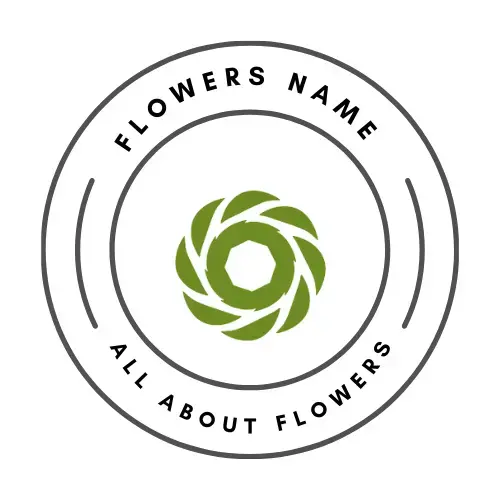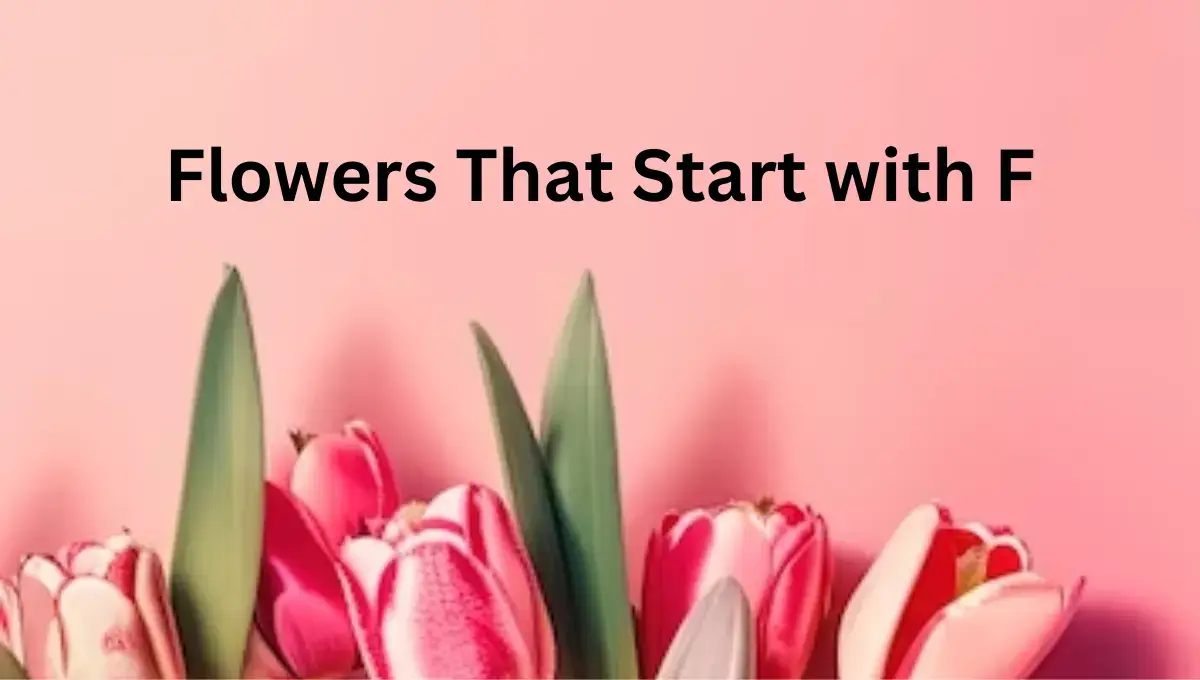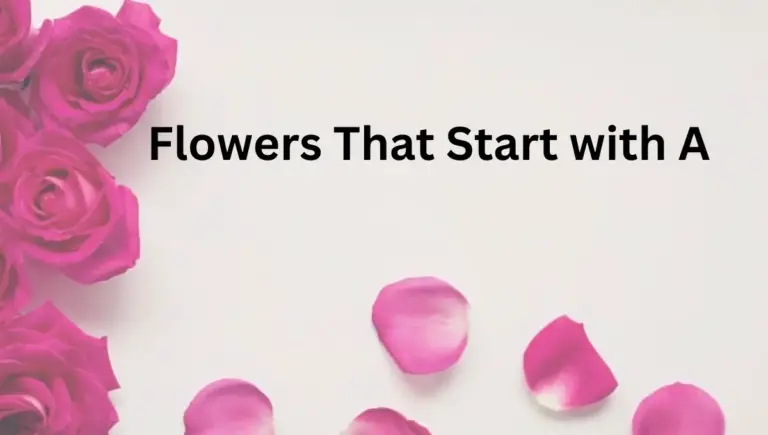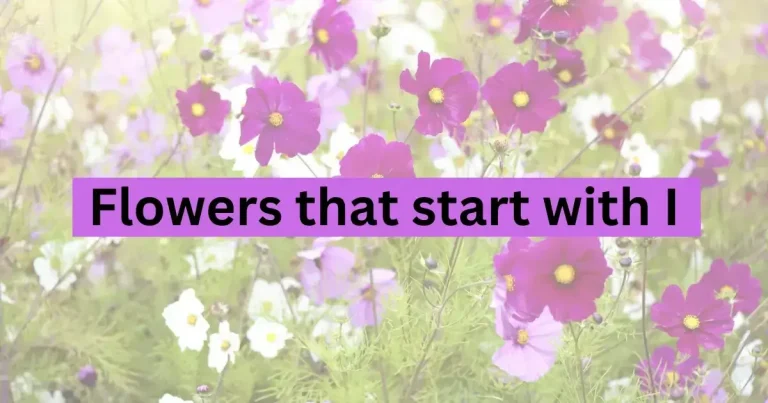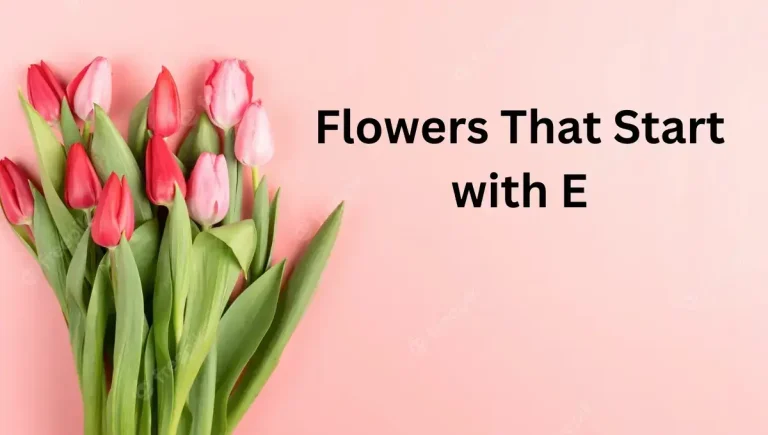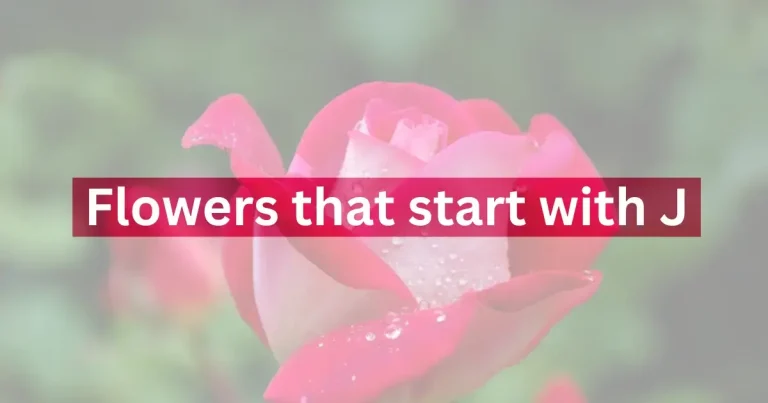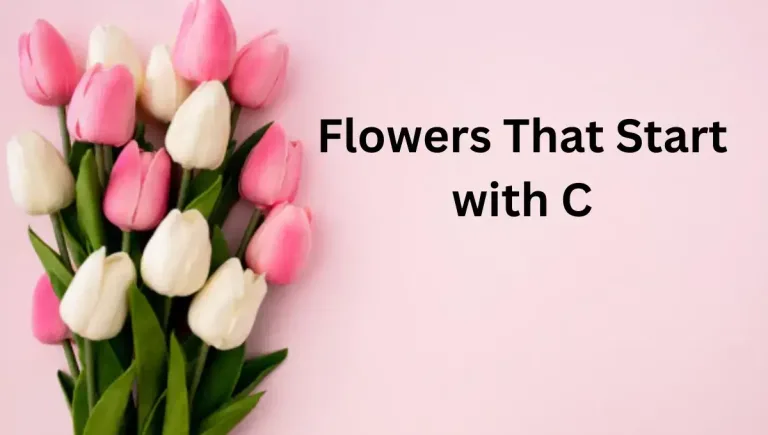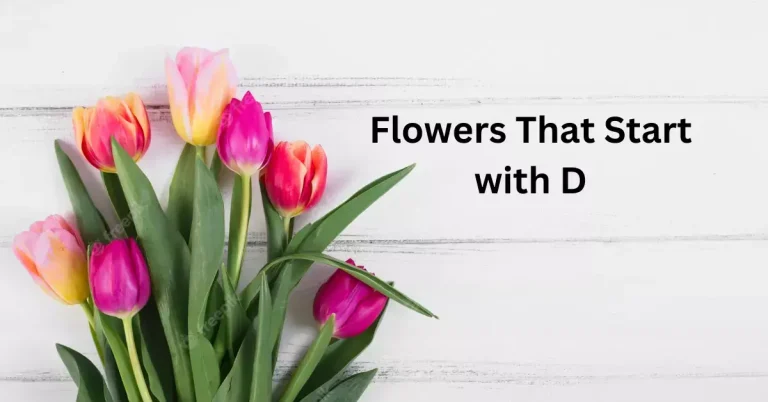Top 10 Common Flowers that start with F
If you are looking for flowers that start with the letter ‘F’ then you can get information about the 10 most eye-catching blooms for your gardens with complete details of the plant with descriptions of their flowers, leaves, maintenance, importance, and toxicity.
By knowing the complete details of the most common and beautiful flowers starting with F you can make your garden more attractive by the addition of these flowers.
list of Flowers that Start with F
Here is the list of the 10 most beautiful flowers that start with the letter “F”. You can read here about flowers that start with E.
Freesia
- Type: perennials
- Botanical name: Freesia
- Phonetic Spelling: FREE-see-ah
- Blooming period: From June to September
- Common name(s): baboon flowers, freesias
- Native area: South Africa
The first flower starting with F is freesia. Freesia flowers are famous for their pleasant fragrance. The fragrance of the flowers depends on the variety of the freesia plant. The blooms of the plant are in different colours including white, yellow, orange, pink, red, and lavender. The blooms are funnel-shaped. The leaves are long and narrow in green colour.
These plants prefer well-draining soil. Watering during the growing season is important. Deadheading helps the plant to grow well.
Note: These are toxic if devoured. Be careful while handling the plant. Keep it out of reach of children and pets.
Fan flower
- Type: Perennial
- Botanical name: Scaevola aemula
- Phonetic Spelling: sky-VOL-ah AYE-mew-lah
- Blooming period: From summers to frost
- Common name(s): fan flower, fairy fan flower
- Native Area: Australia
Fan flowers are famous for their unique flowers. The blooms of the plant resemble a fan or half-circle fan. They are found in various colours including blue, purple, pink, and white, and also in bi or multi-colours. The leaves of the plant are thick and fleshy and found in green colour. This is the 2nd one from the flowers that start with F.
The fan flower is a low-maintenance plant. They thrive in full sunlight. They prefer well-draining soil for their growth. Fan flowers are the best choice for gardens and landscapes due to their beauty and uniqueness of bloom.
False Indigo
- Type: Perennials
- Botanical name: Baptisia australis
- Phonetic Spelling: bap-TEE-zee-uh aw-STRAL-iss
- Blooming period: From May to June
- Common name(s): False Indigo, blue false indigo, wild indigo
- Native Area: Eastern United State
False indigo has its importance due to its attractive blooms. They produce tall and pea-like blooms. The blooms are found in various colours including yellow, purple, pink, and white. The leaves of the plant are usually blue-green in colour or greyish-green in colour.
False indigo is a beautiful and low-maintenance plant starting with F. They grow in full to partial sunlight. They are drought tolerant so they need moisture. Overwatering should be avoided. They prefer well-draining soil. This plant is also very important due to its ecological importance, they can fix nitrogen into the soil with the help of soil bacteria. It is the best choice for gardens and landscapes.
Fern leaf yarrow
- Type: perennials
- Botanical name: Achillea filipendulina
- Phonetic spelling: ak-ih-LEE-a fil-ip-en-DOO-line-uh
- Blooming period: From June to August
- Common name(s): fern leaf yarrow, soldiers woundwort
- Native Area: Iran, Central Asia, Afghanistan, Caucasus
The fern leaf yarrow has unique fern-like leaves which are finely divided and feathery. They are famous for their unique leaves. The leaves have an attractive fragrance when they are crushed. The leaves are found in greyish-green to silvery-green in colour. They have tall and erected blooms which are daisy-like. The blooms are very charming and elegant.
Fern leaf yarrow requires an average moisture level and well-draining soil. They prefer full to light sunlight. They provide charm and eye-catching beauty to any garden.
Feverfew
- Type: perennials
- Botanical name: Tanacetum parthenium
- Phonetic Spelling: tan-ah-SAY-tum par-THEN-ee-um
- Blooming period: from June to August
- Common name(s): Feverfew, Altamiza, mid-summer daisy, pale maids
- Native Area: Central Asia, Europe, West Himalya
Feverfew is famous for their fern like leaves which are in bright green colour. The leaves of the plant have bitter taste when they are crushed. The blooms are daisy-like. The bloom has a yellow center which is surrounded by petals. Feverfew has its importance in medicinal use. They are used to treat migraine and headache. It has also importance in fever reduction, in dealing with digestive disorders, and in menstrual disorders.
These plants are very easy to grow. They prefer full sunlight, well-draining soil. Regular deadheading can help promote the growth of the plant. They are popular among gardeners due to their low maintenance and the beauty of the plant.
Forget me not
- Type: perennials
- Botanical name: myosotis scorpioides
- Phonetic spelling: my-oh-SO-tis skor-pee-OY-dees
- Blooming period: From June to August
- Common name(s): forget me not, water forget me not
- Native Area: Europe and Asia
Forget-me-not flowers are usually small in size. The centre is surrounded by petals that are found in different colours including blue, pink, white, and lavender. The leaves of the plant are usually lance-shaped. They are found in green in colour.
These plants usually thrive in full sunlight. They grow in moist and well-drained soil. Regular watering is important for the better growth of the plant. This plant is the best choice for the garden especially for the memorial garden to signify long-lasting love.
Forsythia
- Type: perennials
- Botanical name: forsythia
- Phonetic spelling: for-SITH-ee-a
- Blooming period: from March to April
- Common name(s): forsythia, Easter tree, Golden bellsNative Area: Eastern Asia
Forsythia are famous for their unique blooms. Forsythia blooms are small in size and grow in the form of clusters that have four petals. The forsythias have green leaves. They have very colorful blooms.
Forsythias thrive in full sunlight. They prefer well-draining soil. These plants can tolerate a variety of soils. It provides an eye-catching view of the gardens and landscapes.
Fox glove
- Type: perennials
- Botanical name: digitalis purpurea
- Phonetic spelling: dij-ee-TAH-liss pur-PUR-ee-ah
- Blooming period: From May to June
- Common name(s): foxglove, common foxglove
- Native Area: Southern, western, and central Europe
Foxglove produces bell-shaped flowers that are found in various colors including pink, purple, white, and yellow. The inner part of the bloom is marked with spots that enhance the beauty of the bloom. The leaves of the plant are large and simple. They are soft and hairy in nature.
Foxgloves prefer full to partial sunlight. They thrive in well-draining soil. Regular watering is important for the plant to grow better. Foxglove plant can be a very good choice for the garden which is the addition for the plant.
Note: All parts of the plants are toxic. Avoid ingestion of the plant. Be careful while handling the plant.
French Marigold
- Type: perennials
- Botanical name: Tagetes Patula
- Phonetic Spelling: tah-JEE-tees PAT-yoo-luh
- Blooming period: From June to frost
- Common name(s): French Marigold
- Native Area: Mexico, Guatemala
French marigolds have vibrant flowers which are daisy-like. The blooms are found in different colours like orange, yellow, red, and bi-colours. The leaves of the plant are in green colour and feathery on touch. The leaves have a fern-like appearance. They grow 6 to 8 inches in height.
These plants require 6 to 8 hours of full sunlight. Regular watering during the dry season is very crucial. It helps to grow better. Deadheading can help the blooming of the plant. French marigolds are important due to their long-lasting blooms which are very cheerful to the eyes. They can be grown in containers, window boxes, borders, and flower beds.
Firecracker Flower
- Type: perennials
- Botanical name: Crossandra infundibuliformis
- Phonetic Spelling: kros-AN-druh in-fun-dih-bew-LEE-for-mis
- Blooming period: Fall, spring, summer
- Common name(s): crossandra, firecracker flower
- Native area: Southern India, Sri Lanka
Firecracker is the last one among the list of flowers that start with F. Firecracker produces long-lasting blooms. These blooms are tubular shaped and resemble a firecracker. The flowers are found in different colours like red, pink, and yellow. These flowers have four to five petals. The leaves are lance-shaped. They are glossy and dark green. They grow from 1 to 3 feet in height.
Firecrackers thrive in full sunlight. They require fertile soil which should be well-drained. Regular watering of the plant is preferred. These plants can be grown in containers. They are very valuable in tropical gardens.
Video Guide
Here is a video about the name of flowers that start with F.
